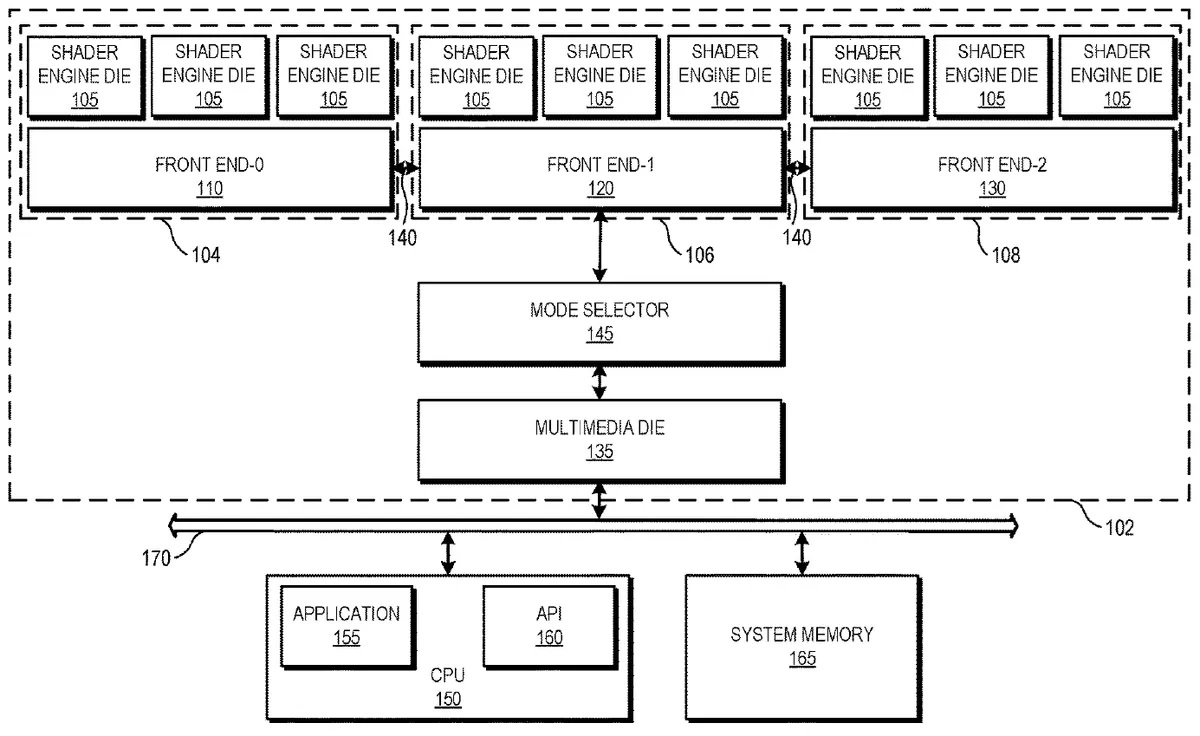- AMD is exploring advanced multi-chiplet GPU architectures for future RDNA designs to enhance performance and scalability.
- Their patent outlines three modes of chiplet usage: single GPU mode for integrated processing, independency mode, and hybrid mode.
- Implementing multi-chiplet designs could increase production costs despite offering scalability and performance advantages.
According to AMD’s patent application, the company is investigating “multi-chiplet” GPU design alternatives, which implies that significant improvements may be included in next-generation RDNA architectures.
Why it matters: AMD already used less complex chiplet designs for its RDNA 3 architecture. However, the company is now trying to develop more intricate multi-chiplet graphics cards for a larger variety of uses.

According to the patent, there are three distinct “modes” of chiplet use; the distinction is in how resources are first assigned and subsequently controlled.
The first is the single GPU mode, which operates quite similarly to existing GPUs, where every onboard chiplet will function as a single, integrated processing unit, sharing resources in a cooperative setting.
The “independency mode” is the second mode, in which individual chiplets operate on their own, managing their functions through a separate front-end die that plans out work for the corresponding shader engine dies.
“Hybrid mode” is the third mode, allowing chiplets to coexist and function independently. It offers scalability and effective resource usage by combining the advantages of independent and unified processing.
The current RDNA 3 architecture is different, as AMD employs numerous Memory Cache Die chiplets for the memory interface. Cache and a single Graphics Compute Die chiplet are used for all other important GPU operations.
Details here are more similar to the GPUs found in CDNA data centers.
In general, multi-chiplet arrangements provide scalability and performance advantages, but their production is a far more complex process that needs sophisticated machinery and procedures. This can lead to higher costs.
While AMD has previously stated that it is utilizing GPU chiplets in conjunction with RDNA 3, this goes beyond that degree of dividing functions among separate chips. Though we believe most other GPU players will eventually adopt a similar strategy, AMD might be the first to release it to the market.
Thank you! Please share your positive feedback. 🔋
How could we improve this post? Please Help us. 😔
[News Reporter]
Malik Usman is student of Computer Science focused on using his knowledge to produce detailed and informative articles covering the latest findings from the tech industry. His expertise allows him to cover subjects like processors, graphics cards, and more. In addition to the latest hardware, Malik can be found writing about the gaming industry from time to time. He is fond of games like God of War, and his work has been mentioned on websites like Whatculture, VG247, IGN, and Eurogamer.


 Threads
Threads

